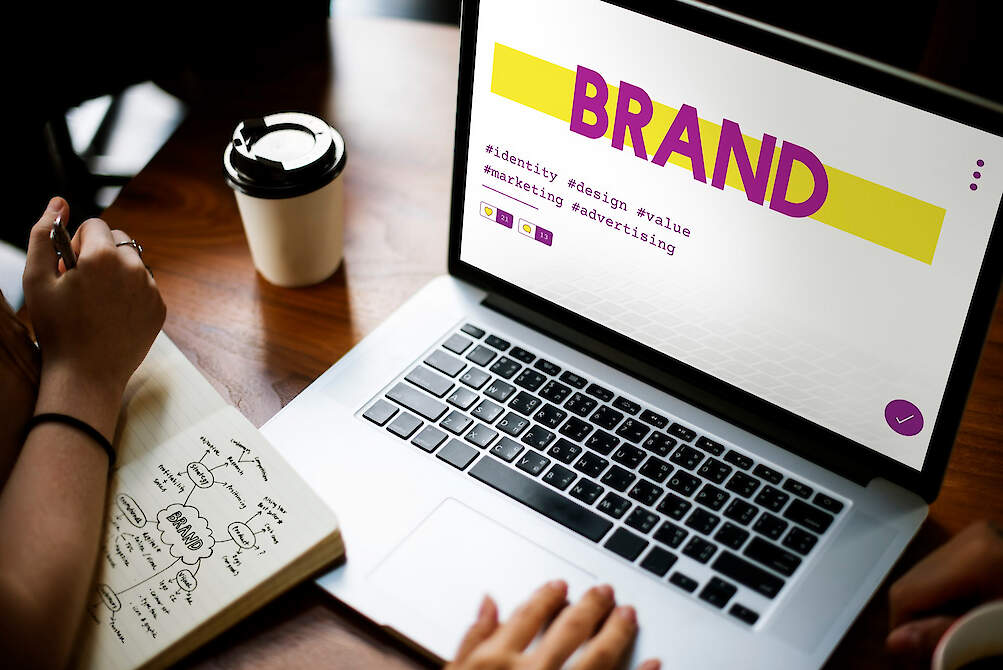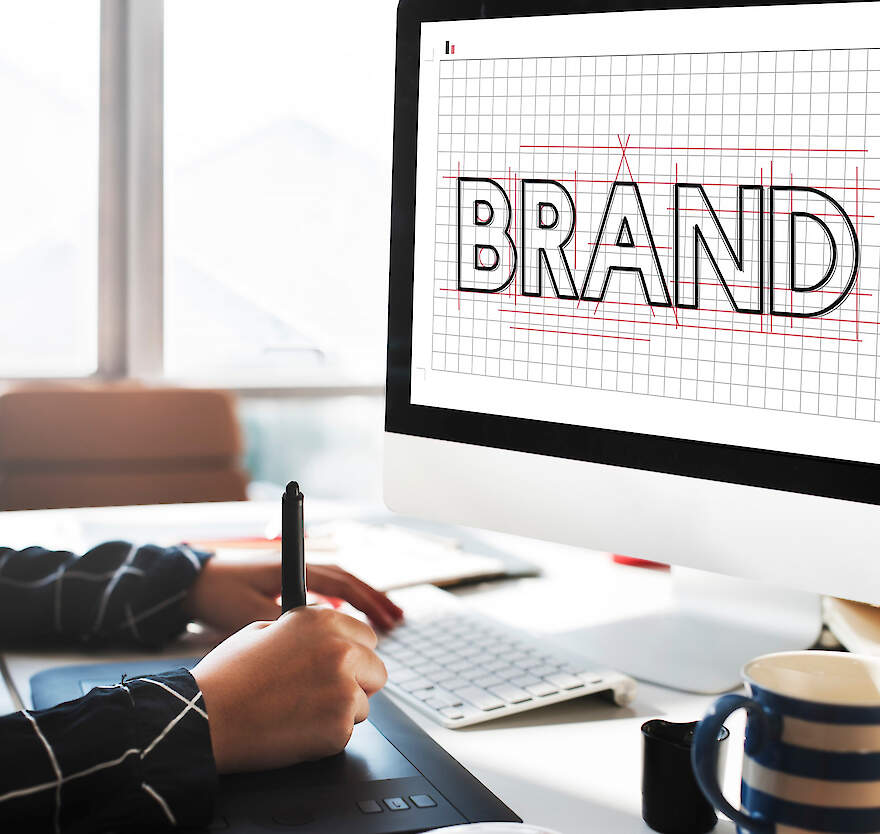
Successful event branding often depends on the smallest details. Every decision, from the wording of an email marketing campaign to the ease of navigation through the event registration process, affects how attendees experience the event. In other words, the devil is in the details.
To help you dot the i's, we'll go over the intricacies and nuances of event branding, giving you helpful tips along the way.
When people think of event branding, logos and colors usually come to mind. While the importance of these two factors cannot be underestimated, the bigger picture must also be taken into account.
Event branding can be thought of as the means by which an event or company expresses its identity. Event branding serves as an extension of the company's broader marketing strategy, aligned with the company's high-level goals such as building reputation, brand awareness, and the pursuit of customer satisfaction.
For example, if a company emphasizes individuality in all marketing copy, this will also show up in event branding, ensuring that all copies are personalized from social media captions to signage wording.

Branding an event takes effort, but it's not just that - it's a means to an end. More precisely, three (interrelated) goals:
Once your event is hosted, successful event branding can be judged by how attendees comment on their experience.
Customer delight, in terms of marketing, is about exceeding user expectations. This is because getting more than expected drives customer delight, and customer delight drives promotion. Word-of-mouth marketing brings many benefits to businesses, including increased market credibility and increased profits.

Whether you're planning a hybrid, face-to-face or virtual event, don't forget the following branding must-haves.
Start with the end goal
If you clearly define the purpose of your event, you can better understand what steps you should take. An all-too-common mistake among event marketers is the tendency to build event components on a case-by-case basis, especially when it comes to marketing and attracting attendees.
Think about who the event will serve (their demographics, needs, and pain points), as well as the purpose of the event, both organizationally and for its participants. This will create a lens through which event planning will be viewed.
Developing a content reuse plan
The branding of an event should not stop after it ends. On the contrary, reusing event content can be a powerful branding strategy to expand your reach, increase credibility, and drive more attendees to your future events. Planning the logistics of recording your event ahead of time, whether it's the entire event or specific moments like keynote speakers, is an important proactive step.
A common practice among marketers is to reuse content from a past event to promote the next one. In this way, they can increase social trust and create higher market credibility. This approach allows marketers to build on the success stories of previous events, leverage the trust and interest of the audience, and reinforce brand positioning and its hidden message. Ultimately, this leads to an increase in engagement, conversion and loyalty.
In addition to promoting future events, digital marketers often use content from past events in various digital marketing channels such as organic social media posts, email marketing campaigns, and the event website. This allows digital marketers to expand the reach and longevity of their event-related content, maximizing its value.
Aesthetics taken into account
For many, the most interesting thing is the study of the world of aesthetics (especially for creative people).
First, let's look at your event logo. Typically, event logos are very similar to the parent company logo, often with minor changes. However, in cases where the event operates autonomously, without a direct connection with a specific organization, there are more opportunities for creative expression.
Next, consider typography and fonts, as well as the use of brand colors and imagery. Design plays a critical role in many aspects of your event, including the layout and visual design of the event landing page, the look and feel of social media content, the color palette for the event’s mobile app, the choice of colors for the photo booth at in-person events, and other related factors. As a general rule, you should make sure that the design elements of the event reflect the same brand personality as the company itself.
In-person events often involve the creation of merchandise such as T-shirts, pens, and other souvenirs. These items serve as a tangible representation of the brand of the event and should be aesthetically designed to reinforce the message of the event.

The popularity of virtual and hybrid events is growing rapidly. However, as with any other event, getting a prospective attendee registered is half the battle. Modern event marketers are turning to various digital marketing strategies to increase brand awareness and promote their events. Let's take a look at the digital marketing techniques you can use and how you can make your virtual event more effective in general.
Create an event landing page
The event landing page has a dual purpose: providing complete information about the event and simplifying the registration process. The presentation of information is just as important as the content itself. Make sure the landing page layout is user-friendly and intuitive, allowing visitors to easily access important details. Informational content should follow a logical order and lead to a call to action (i.e. registration).
The more clicks a user has to make to register, the less likely they are to complete the process. Therefore, it is very important that the registration process is as simple and hassle-free as possible. By minimizing barriers to registration, event organizers increase the chances of converting attendees into listeners.
Promotion in social networks
The choice of social media platform to promote your event should be based on where your target audience is most likely to consume content. For example, if your target audience is B2B, LinkedIn might be your preferred medium. Or, if your audience is less defined, you can rely on Meta's well-designed advertising algorithm to bring in potential visitors.
Regardless of the platform(s) you choose, tailor your content to your audience and the unique characteristics of the platform. Not all content types that work well on one platform work equally well on another. Create content that is optimized for each specific platform and meets the preferences and expectations of the audience.
Other common forms of digital marketing for promotional purposes include Google Ads, Pinterest Ads, and influencer marketing. Ultimately, the choice of ad placement depends largely on the target audience, budget and time frame.
Align event branding with your overall branding strategy
After successful digital marketing, users come to an event expecting, consciously or subconsciously, that the branding will match previous touchpoints. With access to new, innovative event management technologies, it's never been easier to align and enhance your event branding.
More specifically, this could include changing the color palette of your event's desktop interface, or creating a personalized app for attendees attending the event using mobile devices. With cutting-edge technology that offers extensive customization, you have the ability to make the necessary changes that support the branding you envision.
Ensure consistency
Event branding starts long before it starts and continues after. Consider and hone in on the various pre- and post-event touchpoints where your target audience can connect with your brand, from an attention-grabbing targeted PPC campaign to a carefully crafted “thank you for attending” email.
A key function of event branding is to ensure consistency across all media. By paying attention to the smallest (perhaps often overlooked) elements of event branding and making sure they fit with the overall style of the brand, marketers can increase the likelihood of creating a memorable and impactful event that will resonate with the audience.

Exceed attendee expectations with these in-person branding tips.
Provide a branded check-in experience
The registration page at an event is often the first point of contact for visitors to your event's brand. Therefore, it is very important that it accurately reflects your brand's personality, message and visual elements. A fully customizable and branded event registration page will help you with this.
By incorporating your brand's colors, fonts, and images into your signup page design, you can create a seamless brand experience that starts with the first click. In addition, personalized registration forms allow you to collect data that you can use for marketing purposes and to personalize the member experience.
Don't forget to register for the event
Once attendees arrive at your event, you need to continue to ensure a consistent brand experience. One way to achieve this is through fully branded and customizable event registration and badge printing software. This software allows you to include your brand visuals in the registration process and print branded badges for a professional and consistent look.
The customizable software also allows you to create unique signup effects that match your brand's advertising message, such as personalized greetings, welcome messages, or even interactive elements. This can set the tone for the event and make a positive impression on the attendees.
Place attractive signage
Signage is a proven event branding tool that continues to prove its worth. Signage enhances your brand's presence and conveys key messages to your audience by providing them with guidance and navigation through the event, as well as serving as a brand awareness tool. Like all marketing materials, signage should accurately reflect your brand and align visually and tonally with the overall marketing strategy of the event.
Ensure consistency with the event mobile app
In today's digital age, mobile event apps have become an integral part of in-person events, providing attendees with a personalized and interactive event experience. To ensure event branding consistency, you need to customize the app to reflect your brand personality.
An event mobile app that allows customization of logos, colors, icons, and messages can provide a seamless brand experience for attendees. In this way, attendees will be able to view schedules, event maps, and other event-related information in a branded environment that feels like an extension of your event. This, in turn, can increase brand awareness and promote brand awareness long after the event is over.
User Content Optimization
Photo booths and floral walls draw people in, creating optimal conditions for user-generated content creation. You can leverage this by encouraging them (through signage) to use the event's unique hashtag when posting, which will increase the event's organic visibility.
Use souvenirs to create unforgettable experiences
The meaning of using souvenirs at events can be divided into two camps: the principle of customer admiration and the principle of reciprocity. Exceeding expectations is the key to a successful event, and providing attendees with branded merchandise such as clothing and bags can be an effective way to achieve this.
The other side of the coin, however, is the notion of reciprocity. When people get something for free, they tend to reciprocate. In the context of events, this can mean that visitors tag your brand on social media, leave positive reviews, attend future events, and become brand advocates.
Using innovative event management technologies is an effective way to seamlessly engage attendees. With features such as gamification and customizable networking options, you can create an immersive and personalized event that will reinforce your brand, leave a lasting impression, and increase the likelihood of repeat attendance.
The OnlineExpo Platform is a complete event management solution that gives you all the resources and technology you need to run a successful event, whether in-person, virtual or hybrid. To optimize your event branding, request a custom demo today.
We also recommend that you read:
In-person events: Examples, tips, tricks, and best practices
Learn more about the possibilities of the event platform OnlineExpo